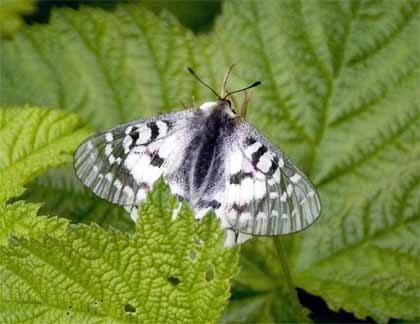Story and photos by Kelly Sprute
Contributing Writer
Hunting butterflies takes perseverance, excellent eyesight, and amble dexterity to look around obstacles. Catching them takes the patience of a fisherman and the agility of an eagle.
Summertime is butterfly season.
“You don’t need a hunting license, but you might need a permit to carry a net,” said David Droppers, with the Washington Butterfly Association. Droppers is working with United States Forest Service to survey the Johnson’s Hairstreak (Callophrys Johnson) butterfly, a Washington-listed species of concern in the Mt. Baker-Snoqualmie National Forest. He also monitors all other butterflies within the survey corridor.
“The survey is being conducted to increase our knowledge and determine the presence, habitat and life cycle on our forest,” said Phyllis Reed, Forest Service wildlife biologist. “Butterflies play a key role as pollinators, fertilizing wild and cultivated plants.”
Researchers worry that butterfly populations may be in decline. Flying insects are sensitive to their habitat and are viewed as the ‘canary in the coal mine’ in signaling environmental change.
“Spotting butterflies is hard, but once you focus on the signs and habits you start to notice them,” Droppers said. “Look for what they eat — each species of butterfly has a unique diet or a specific place to lay their eggs. The Johnson’s Hairstreak will lay their eggs in dwarf mistletoe, a parasite on old growth Western Hemlock.”
Knowing those habits makes the job easier, but documenting and monitoring butterflies can still be difficult. The search window for butterflies is narrow and their lifecycle can be very short according to Droppers.
The Johnson’s Hairstreak will only live for two weeks as an adult. About two percent of all eggs laid will survive to adulthood. Weather, predators and food all play roles in their survival.
Adding to the difficulty of catching one is their flight habits. Johnson’s Hairstreak usually fly high in trees’ canopy, coming down only for food and water.
“You need to be ready to spot the butterflies on the ground, for catching them requires speed and agility,” Droppers said.
He uses two distinct methods to capture butterflies: a quick scoop and flip while in flight; or dropping the net over them while they are resting.
“Over time, the net becomes an extension of your arm, making it easier to catch butterflies,” said Droppers.
He always releases the butterflies he catches unless he needs to identify a new species.
“The best way in determining the sex and species is by dissecting them.”
Droppers became hooked on the species after stepping into the butterfly exhibit at the Woodland Park Zoo to photograph them. He started to identify the butterflies in his photos and wanted to learn more.
The first year of the Johnson’s Hairstreak survey is complete.
“I didn’t get any dwarf mistletoe. All the trees are still pretty young and healthy,” said Droppers.
He never saw the Johnson’s Hairstreak, but failure to detect does not mean an absence on the forest.
“It is a very rare butterfly with small colonies and very scattered,” Droppers said.


